Megalaima haemacephala
IUCN
LCBasic Information
Scientific classification
- name:Megalaima haemacephala
- Scientific Name:Megalaima haemacephala,Coppersmith Barbet,Crimson-breasted barbet,Coppersmith
- Outline:Climbing birds
- Family:
Vital signs
- length:15-16cm
- Weight:38-49g
- lifetime:No textual research information is available
Feature
Bright orange-yellow spots above the eyes, which stand out on the dark head
Distribution and Habitat
The species is distributed in Yingjiang, Luxi, Shuangjiang, Yongde, Gengma, Lancang, Jinggu, Jingdong, Simao, Xishuangbanna and Yuanjiang in Yunnan Province.
Outside China, the species is found in Bangladesh, Bhutan, Cambodia, India, Indonesia, Laos, Malaysia, Myanmar, Nepal, Pakistan, Philippines, Singapore, Sri Lanka.
It mainly lives in broad-leaved forests, forest margins and farmland areas in the low mountains and foothills of the plains, up to 1000 meters above sea level in open lowland forests, and also occurs in jungles, gardens, orchards and urban areas near homes.
Appearance
The forepart of the forehead and head of the pecker are scarlet, and there is a black transverse band behind it, which is connected with the black of the front and the back of the eyes, and the cheek stripe is also black. A bright yellow patch above and under the eyes; Dark green or SLATE green on the back of the head, pillow, nape and side of the neck; The back, shoulders, waist and tail coverings are olive green with yellow accents, especially the waist and tail coverings are brighter. The upper wing cover is the same color as the back, slightly gray-blue, the two wings are black-brown, the outer surface is green and blue, the tail surface is dark green. The chin and throat are bright yellow, and the chest has vermilion half-moon spots, and there are orange crescent spots behind it. The rest of the lower body is yellowish-white, with dark green or gray-green stripes. The iris is dark brown, the exposed skin around the eyes is vermilion, the mouth is black, the tarsometatarsus and toe
Details
Megalaima haemacephala, Coppersmith Barbet, Crimper-breasted barbet, Coppersmith, has 9 subspecies.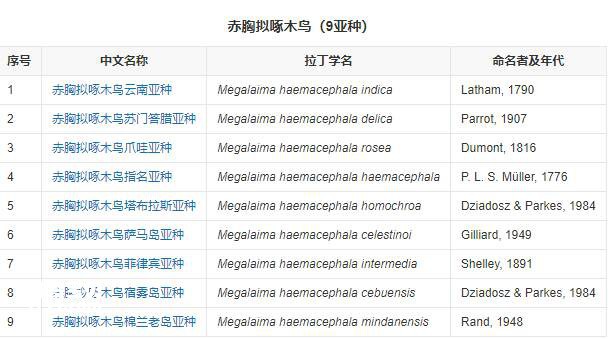
Pseudowoodpecker is a resident bird. They are often solitary except during the breeding season, and sometimes in small groups on trees where food is abundant. It is active and roosts in the canopy. The flight is powerful and fast. It mainly feeds on plant fruits and seeds, but also eats animal foods such as insects and insect larvae.
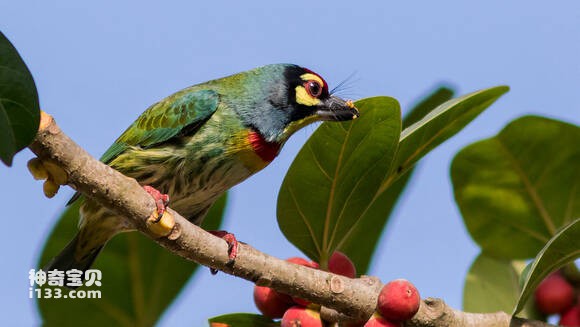
Like other woodpeckers, the red-breasted birds gather on light branches in the early morning to sing like a resonant monotone metallic "tuk" or "tonk" for several minutes at a steady rate of about 110 sounds per minute. The tail flips forward with each tonk. The other call is slower and more irregular, nodding up and down but not moving its tail.
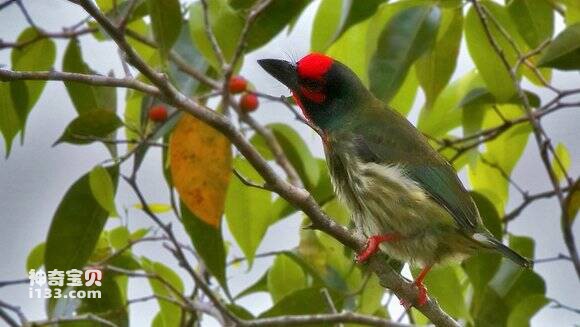
The breeding period is from March to May. Nest in a hole in a tree. Suitable trees in forests, forest edges, land edges, orchards, towns and in front of and behind houses can be selected for nesting. Nest holes are dug by the parent birds themselves, usually about 1.5 or 5 meters above the ground. Two to four eggs are laid in each clutch. The eggs are white, 23-29×17-19 mm in size, and are incubated by male and female in turn. The incubation period is 14-16 days, and the chicks become late sex.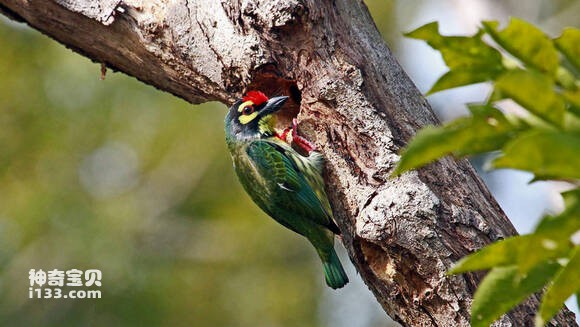
Pseudowoodpecker has a wide distribution range, does not approach the vulnerable endangered threshold criteria for species survival (distribution area or fluctuation range of less than 20,000 square kilometers, habitat quality, population size, distribution area fragmentation), and population trend is stable, so it is assessed as non-endangered species.
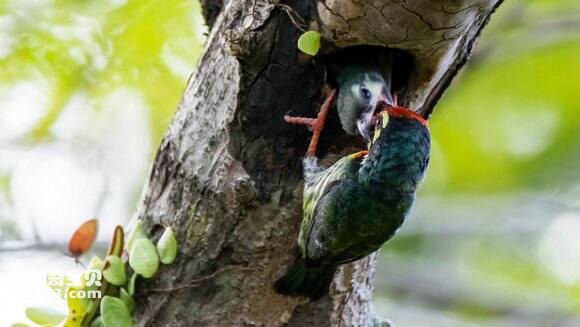
Listed on the International Union for Conservation of Nature (IUCN) 2012 Red List of Threatened Species ver 3.1 - Not Threatened (LC)。
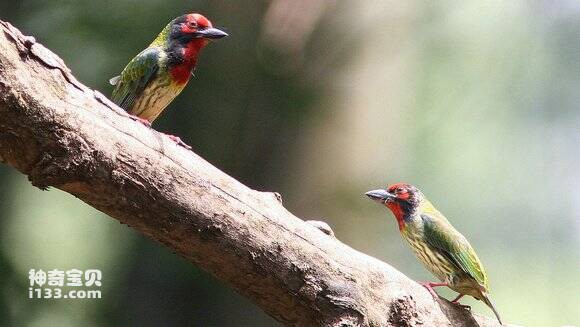
Protect wild animals and eliminate wild meat.
Maintaining ecological balance is everyone's responsibility!








